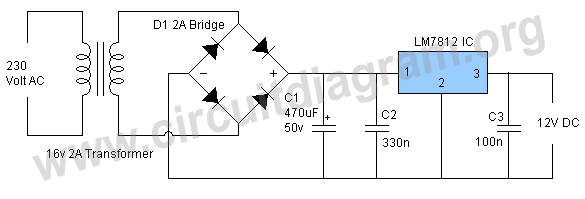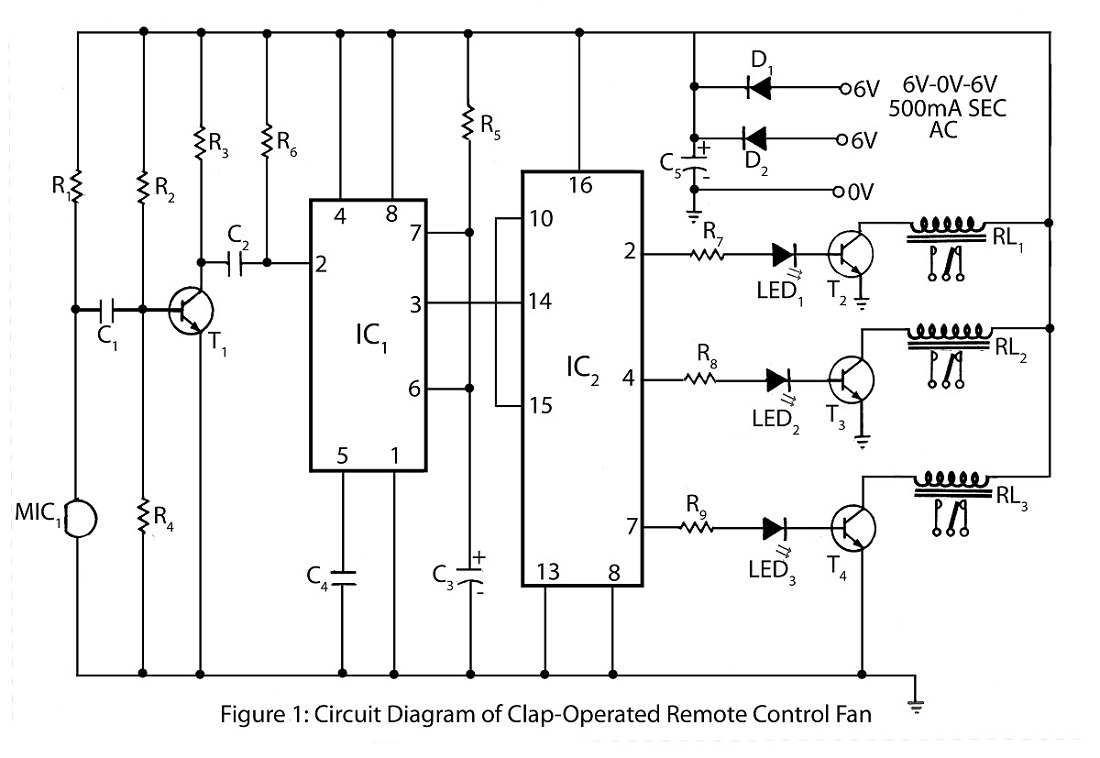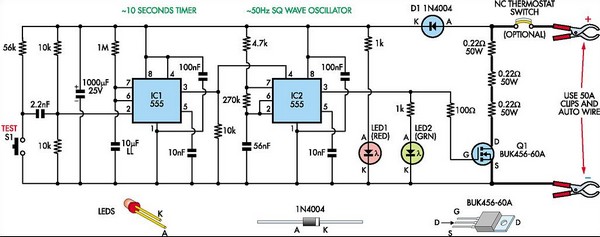
Infrared Remote Tester circuit

A simple device that enables a quick check of common infrared remote controls can be beneficial for electronics enthusiasts often tasked with repairing or testing these widely used devices. A dependable circuit has been designed using a few components: the LED will illuminate when any button on the remote control is pressed. The side of the remote control containing the infrared emitting diode(s) must be pointed towards the phototransistor (Q1) of the checker circuit, with a maximum effective distance of approximately 20 to 25 cm.
The infrared remote control tester circuit consists of a few key components, including a phototransistor (Q1), a light-emitting diode (LED), and a resistor to limit the current through the LED. The phototransistor is sensitive to infrared light emitted by the remote control's infrared LED when a button is pressed.
When the infrared light from the remote control reaches the phototransistor, it generates a small current that activates the LED, causing it to flash. This visual indication confirms that the remote control is functioning and emitting signals. The circuit is designed to operate effectively within a range of 20 to 25 cm, which is suitable for typical testing scenarios.
The configuration of the circuit is straightforward. The phototransistor is connected in such a way that it can detect infrared signals and control the LED's state. A resistor is placed in series with the LED to prevent excessive current flow, ensuring the longevity of the LED.
To build the circuit, the following steps can be followed:
1. Connect the collector of the phototransistor to the positive terminal of the power supply.
2. Connect the emitter of the phototransistor to one terminal of the LED.
3. Connect the other terminal of the LED to ground through a current-limiting resistor.
4. Ensure that the phototransistor is oriented properly to receive the infrared signals from the remote control.
This simple yet effective circuit serves as a valuable tool for electronics enthusiasts, providing a quick and reliable method for testing remote controls.A very simple device allowing a quick check of common Infra-red Remote-Controls can be useful to the electronics amateur, frequently asked to repair or test these ubiquitous devices. A reliable circuit was designed with a handful of components: the LED will flash when any of the Remote-Control push buttons will be pressed.
The side of the Remote-Control bearing the IR emitting diode(s) must be directed towards the Photo Transistor (Q1) of the checker circuit: maximum distance should not exceed about 20 - 25cm.. 🔗 External reference
The infrared remote control tester circuit consists of a few key components, including a phototransistor (Q1), a light-emitting diode (LED), and a resistor to limit the current through the LED. The phototransistor is sensitive to infrared light emitted by the remote control's infrared LED when a button is pressed.
When the infrared light from the remote control reaches the phototransistor, it generates a small current that activates the LED, causing it to flash. This visual indication confirms that the remote control is functioning and emitting signals. The circuit is designed to operate effectively within a range of 20 to 25 cm, which is suitable for typical testing scenarios.
The configuration of the circuit is straightforward. The phototransistor is connected in such a way that it can detect infrared signals and control the LED's state. A resistor is placed in series with the LED to prevent excessive current flow, ensuring the longevity of the LED.
To build the circuit, the following steps can be followed:
1. Connect the collector of the phototransistor to the positive terminal of the power supply.
2. Connect the emitter of the phototransistor to one terminal of the LED.
3. Connect the other terminal of the LED to ground through a current-limiting resistor.
4. Ensure that the phototransistor is oriented properly to receive the infrared signals from the remote control.
This simple yet effective circuit serves as a valuable tool for electronics enthusiasts, providing a quick and reliable method for testing remote controls.A very simple device allowing a quick check of common Infra-red Remote-Controls can be useful to the electronics amateur, frequently asked to repair or test these ubiquitous devices. A reliable circuit was designed with a handful of components: the LED will flash when any of the Remote-Control push buttons will be pressed.
The side of the Remote-Control bearing the IR emitting diode(s) must be directed towards the Photo Transistor (Q1) of the checker circuit: maximum distance should not exceed about 20 - 25cm.. 🔗 External reference





